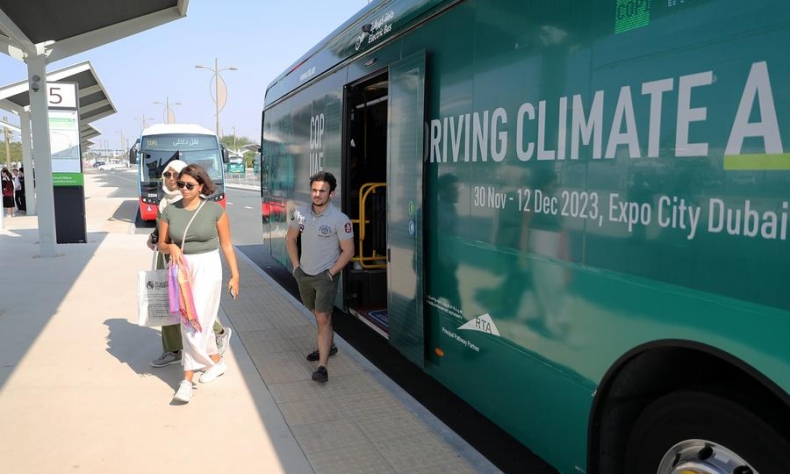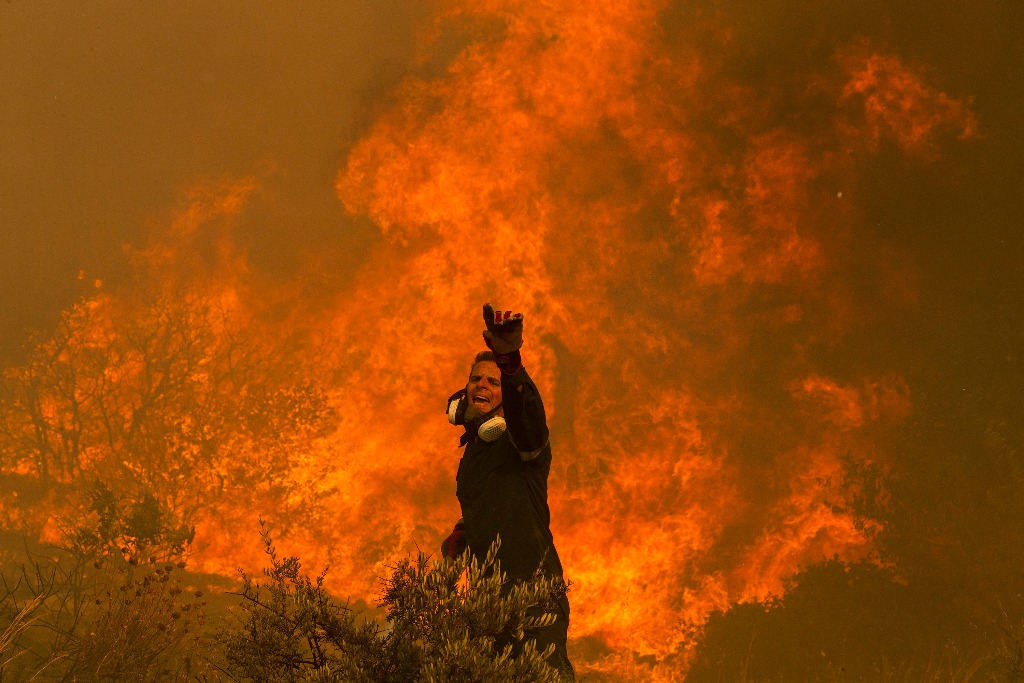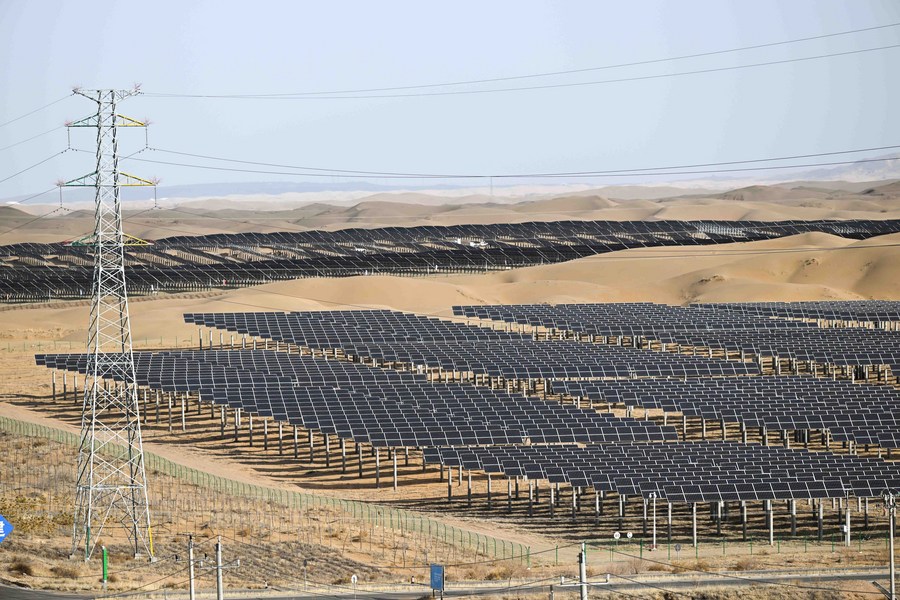COP28 in Dubai Calls for Accelerating Global Response to Climate Change

In the global response to climate change, developed countries have both historical responsibilities to shoulder and realistic capabilities to contribute, and should play a more active and important role.
Numbers only reveal the tip of the climate change iceberg, and the international community needs to accelerate its joint response to the crisis. With a month to go before the year wraps up, the World Meteorological Organization on November 30 labeled 2023 the hottest 12-month period in almost 175 years of collecting climate data.
“The era of global warming has ended and the era of global boiling has arrived,” UN Secretary General António Guterres stated during a press conference in July after scientists had confirmed that month had then been on track to becoming the world’s hottest on record.
As of late September this year, 86 days with temperatures over 1.5 degrees Celsius above pre-industrial levels had been recorded. September was the warmest month ever on record, with global average temperatures 1.8 degrees Celsius above pre-industrial levels, according to the Emissions Gap Report 2023, released by the United Nations Environment Programme (UNEP) ahead of the 28th session of the Conference of the Parties (COP28) to the United Nations Framework Convention on Climate Change (UNFCCC) in Dubai, the United Arab Emirates (UAE).
“We are taking baby steps, stepping far too slowly from an unstable world that lacks resilience to working out the best responses to the complex impacts [of climate change] we are facing,” UN Climate Change Executive Secretary Simon Stiell said at the opening ceremony of COP28 on November 30.
COP28 President Sultan Ahmed Al Jaber warned that “we have around six years before we exhaust the planet’s ability to cope with our emissions, before we blow through the 1.5-degree limit.” This limit was agreed upon in the 2015 Paris Agreement, which aims to limit global warming to well below 2, and preferably to 1.5, degrees Celsius, compared with pre-industrial levels.
The two-week-long UN climate change conference in Dubai has garnered global attention as it marked the conclusion of the Global Stocktake, the first-ever two-year assessment of the world’s collective progress toward the goals of the Paris Agreement.
The assessment served not only to review and summarize the progress made so far, but also to provide the international community with an opportunity to build consensus on climate governance, and to establish a scientific basis for policymakers to urge countries to step up action, Wang Ruibin, Deputy Director of the Department for World Economy and Development at the China Institute of International Studies, told Beijing Review.
What countries are doing, in terms of climate governance, is far from enough, and more action is necessary, Zhang Zhongxiang, Founding Dean and Distinguished University Professor at Tianjin University’s Ma Yinchu School of Economics and Director of the China Academy of Energy, Environmental and Industrial Economics, told Beijing Review, adding that developed countries, in particular, must fulfill their commitments and obligations under the Paris Agreement, and ensure the roll-out and implementation of tangible, concrete action to mitigate the adverse impact of climate change.

Cooling down
The COP27 in Egypt in 2022 closed with a breakthrough agreement to provide “loss and damage” funding for vulnerable countries hit hard by climate disasters. This had been a long-standing demand of developing nations coping with the cost of the devastation caused by ever-increasing extreme weather events such as droughts, floods and rising sea levels.
On the opening day of the COP28, several countries, led by the UAE, made their financial commitments to the fund.
This marked, to some extent, progress, Wang said. But the funds raised are far from sufficient to meet the needs of developing countries, which bear the brunt of the climate crisis. “How to properly distribute the funding to those vulnerable countries remains to be negotiated,” he added.
On December 1, at a special session of the World Climate Action Summit held during the conference, delegates signed a landmark declaration, the COP28 UAE Declaration on Sustainable Agriculture, Resilient Food Systems and Climate Action. The document calls on countries to work together on agriculture, food and climate action.
The industrial food system is responsible for one third of greenhouse gas emissions and 15 percent of fossil fuel use, said Lim Li Ching, Co-Chair of the International Panel of Experts on Sustainable Food Systems and a researcher with the Third World Network, an independent non-profit international network of organizations and individuals involved in issues related to development, developing countries and North-South affairs.
A UN-backed study in 2021 also confirmed that more than one third of global greenhouse gas emissions caused by human activity can be attributed to the way we produce, process and package food.
Endorsement of the declaration will help strengthen food systems, build resilience to climate change, reduce global emissions and contribute to the global fight against hunger, aligned with the 2030 UN Agenda for Sustainable Development, according to a Xinhua News Agency report.
In Wang’s opinion, this was another step forward in the battle against climate change as the COP28 finally put food-related issues on the table.
“Our past efforts mainly targeted industrial activities, but if we don’t cooperate to take measures on reducing emissions from food systems, it will actually offset many of the efforts in other areas,” he explained.
In November, China and the United States released the Sunnylands Statement on Enhancing Cooperation to Address the Climate Crisis, reaffirming their commitment to work together, and with other countries, to address the climate crisis. The two countries agreed to enhance cooperation in energy transition, reducing methane and other non-carbon dioxide greenhouse gas emissions, to jointly tackle global warming, according to the statement.

During the COP28, China’s Special Envoy for Climate Change Xie Zhenhua also emphasized the urgent need for international cooperation to enhance methane control—another major factor behind global warming other than carbon dioxide—in developing countries and together with U.S. Special Presidential Envoy for Climate John Kerry urged global unity and action.
Both Zhang and Wang mentioned the potential for cooperation on methane control, saying China and the U.S. reaching an agreement on reducing methane emissions can be seen as one of the substantial achievements of this year’s conference. This cooperation will win the international community valuable time to further reduce greenhouse emissions.
Ice-breaking efforts
Since day one of the conference in Dubai, Chinese new-energy vehicle (NEV) manufacturers Higer and BYD have provided electric shuttle bus services to ferry attendees—one example of the dynamic development of China’s new-energy industry and its contribution to global climate governance in recent years.
China’s NEV production and sales rank first in the world, accounting for more than half of the world’s total with more than 18 million NEVs in use.
China aims to peak its carbon emissions before 2030 and achieve carbon neutrality before 2060. The 2023 annual report on China’s policies and actions to address climate change showed that the country’s carbon dioxide emissions per unit of GDP had dropped by more than 51 percent in 2022 from its 2005 level.
China’s achievements in developing renewable energy resources have been phenomenal and people outside of China perhaps don’t realize the scale of the shift that is taking place, Dominic Waughray, Executive Vice President of the World Business Council for Sustainable Development, told Xinhua.
Total installed capacity of renewable energy of China had risen 20.8 percent year on year to top 1.4 billion kilowatts as of late October, data from the National Energy Administration showed. This figure accounted for 49.9 percent of the country’s total installed power generation capacity.
“China is key in the decarbonization of the energy we use today,” COP 28 President Al Jaber told Xinhua, elaborating that more than three-quarters of the world’s solar panels, around 60 percent of the world’s wind turbines and three-quarters of all lithium-ion batteries come from China.

Hot potatoes
As major carbon emitters since the Industrial Revolution, which began in earnest around the 1830s in Britain, developed countries bear a historical responsibility to offer help to developing countries, the biggest victims of climate change, Wang said.
Under the UNFCCC and its Paris Agreement, developed countries should provide assistance in finance, technology and capacity building to developing nations to adapt to climate change and mitigate its impacts. At the 2009 climate conference in Copenhagen, they pledged to provide $100 billion of climate finance a year by 2020. In October 2021, the UK COP presidency suggested this target would be met by 2023. But that promise has yet to be fulfilled.
“Europe, North America, Japan and a few more of the most developed countries in the world are the countries who have caused the problem,” Erik Solheim, former UN Under-Secretary-General and former Executive Director of the UNEP, told Xinhua.
According to a report published in August on NOAA Climate.gov, a U.S. platform providing scientific data and information about climate science, adaptation and mitigation, “from the perspective of fairness, the U.S., for example, has released more heat-trapping gases to date than either China or India, the world’s two most populous countries.”
By comparison, China and India have been relative latecomers to industrialization, although China has been picking up the pace quickly. Even so, both countries have remained behind the U.S. in per person emissions and total cumulative emissions. “At China’s 2021 rate of 11.47 gigatons per year, it would take roughly 15 years to match the U.S. historical contribution. At India’s 2021 rate of 2.71 gigatons per year, it would take about 135 years to catch up to the U.S.,” the report read.
In the global response to climate change, developed countries have both historical responsibilities to shoulder and realistic capabilities to contribute, and should play a more active and important role, Wang said, echoing Solheim.
“Talk shows are over now,” Minister of Energy of Malawi Ibrahim Matola said at the COP28, adding that “they need to walk the talk.”
 Facebook
Facebook
 Twitter
Twitter
 Linkedin
Linkedin
 Google +
Google +










